|
Yolo Bypass Wildlife Preserve: An
Environmental Success
by Willie Vergara
The Yolo Bypass Wildlife Area is
widely hailed as a national model for environmental restoration as well as
lifting standards of living. It is primarily useful as a floodway, thereby
controlling the intermittent floods in Sacramento especially in years of
extraordinary rainfall. It is one of the least known parks in Northern
California in spite of the many things that it can offer.
This is located within the Yolo Bypass in Yolo County, California. The
Wildlife Area is managed by the California Department of Fish and Game
with the intent of restoring and managing a variety of wildlife habitats
in the Yolo Basin, a natural basin in the north part of the Sacramento-San
Joaquin River Delta. My daughter Ria has passed this place about a hundred
times when she was having her Pathology fellowship at the UC San
Francisco, oblivious to the beauty of this wildlife preserve. The same is
true for my wife Tess and I, like many residents in Sacramento and Yolo
counties and vicinity cities and towns. We were not aware about this
nature park until the early part of this year. It had to take one of my
engineer-officemates, an avid photography hobbyist, to lead us to this
place “in order to watch the Sand Crane Festival”.
Yolo Bypass Wildlife Area is the perfect spot to escape urban life in
nearby Sacramento. Hunters, birders and schoolchildren all come to the
area to experience wildlife up-close in nature. One needs to arrive
several minutes before sunrise in order to enjoy the changing colors of
the sky.

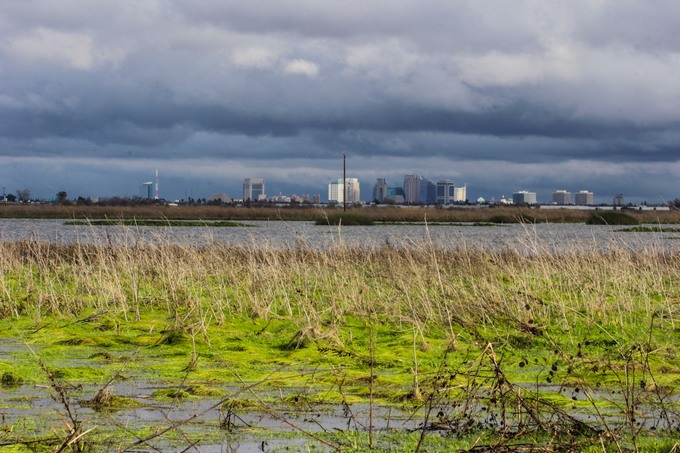
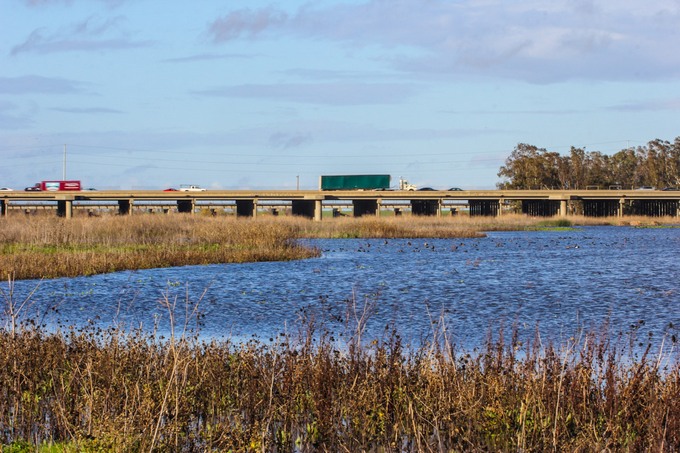
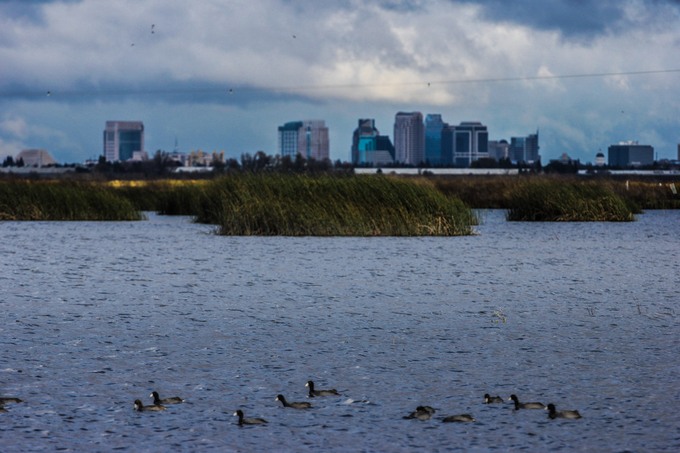

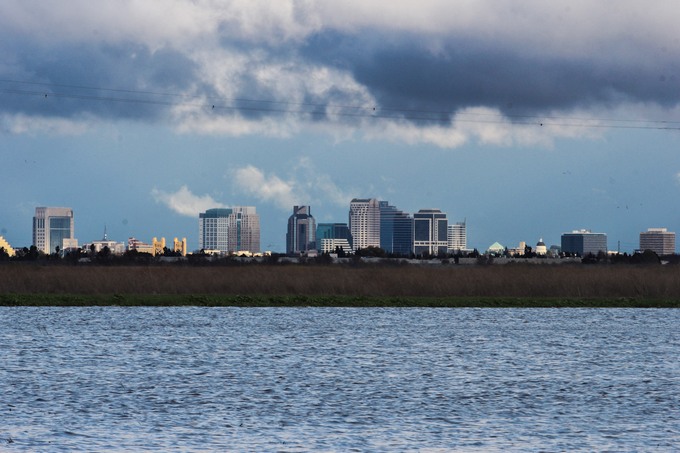
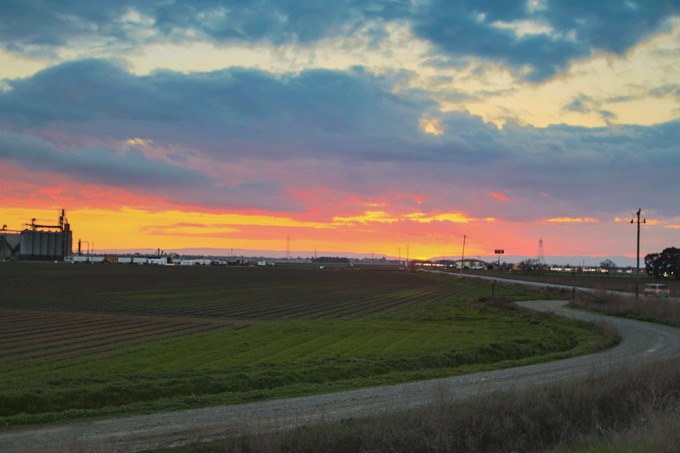
It is one of the largest public/private restoration projects, and such
restoration is ongoing. Covering 25 square miles and home to 200 species
of birds, the Yolo Wildlife area is located between the cities of Davis
and Sacramento – 35 minutes from our home in Rocklin, California.
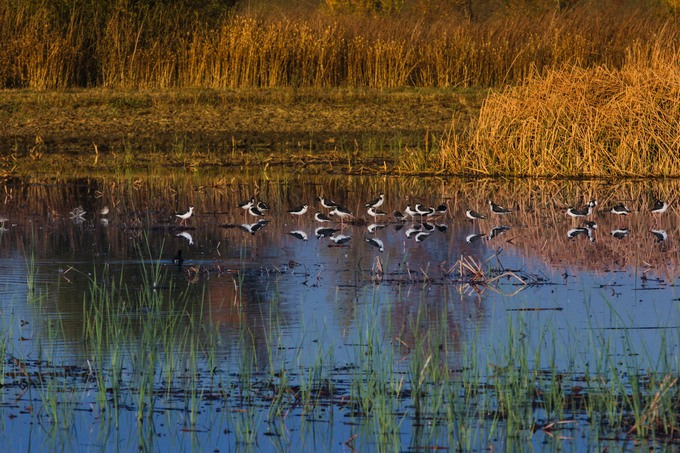
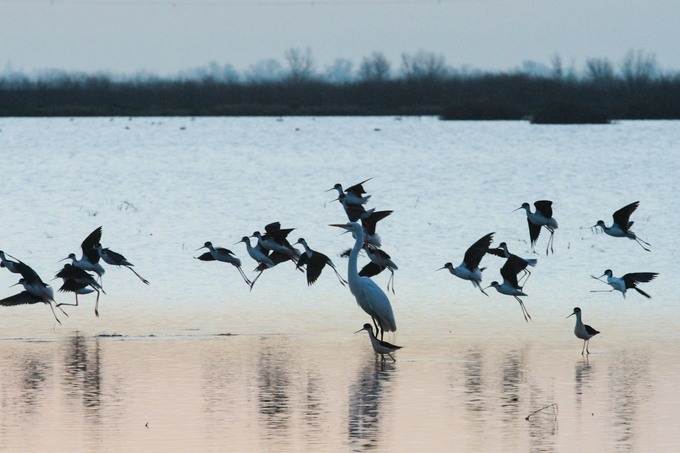
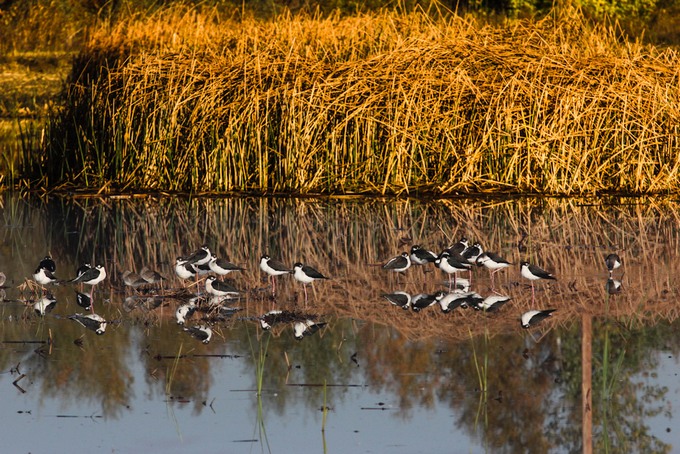
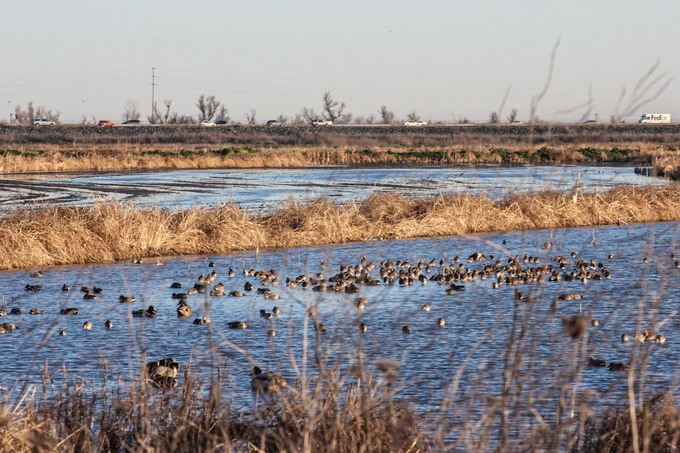
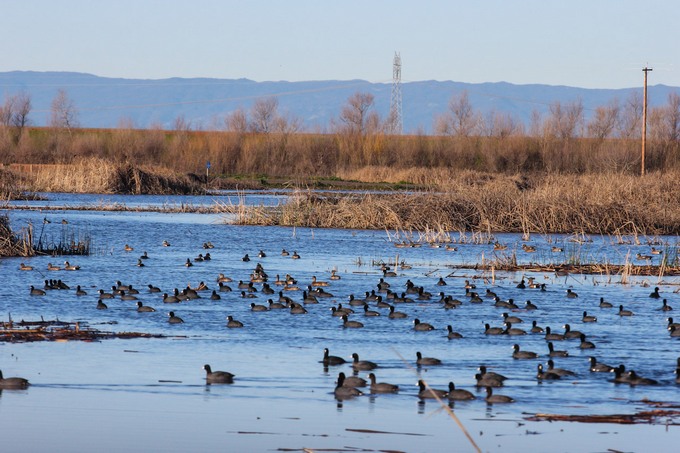
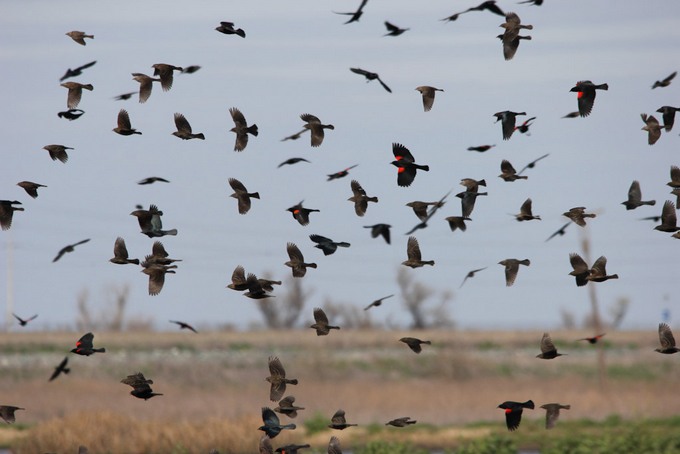
This place is becoming to be widely popular as a recreational area for
naturists, photography hobbyists, and hunters. Annual field trips and and
on-site workshops that include waterfowl drawing, duck calling, tule
decoys, and trout fishing. Hunting is regulated and hunters have to
register each time. This past hunting season of November and December
2012, hunters have had their fill of several mallards, American wigeons,
pintails, teals, shoveler, buffle-heads, goldeneye, and gadwall.
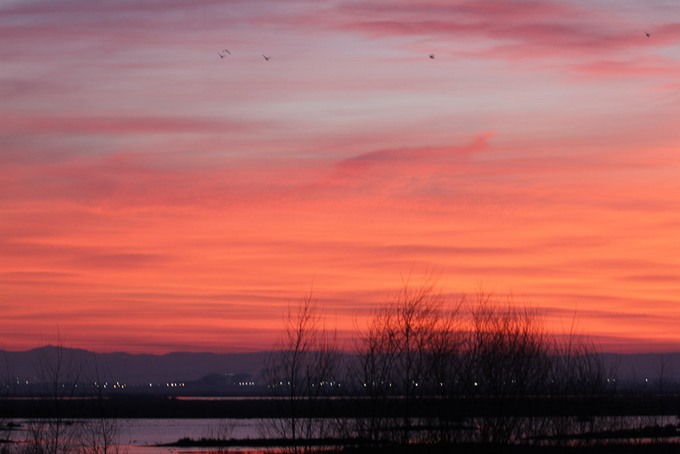

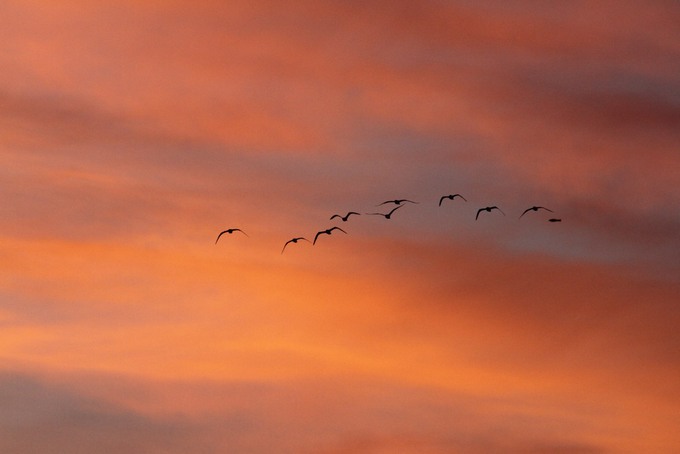
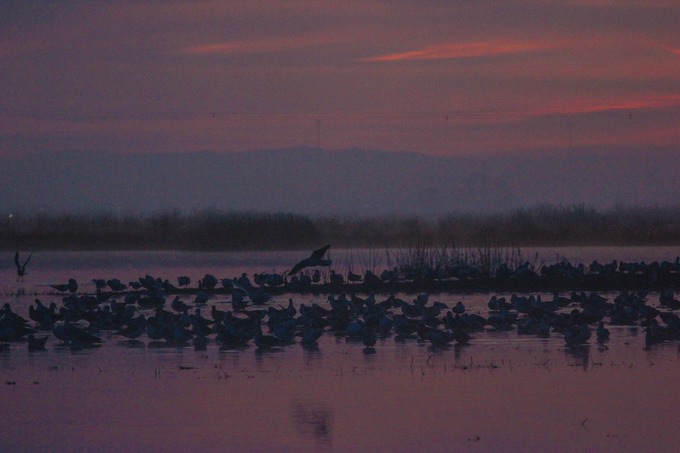
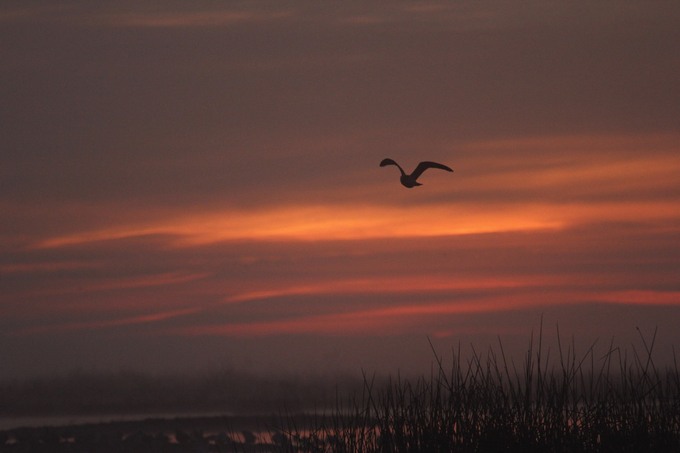
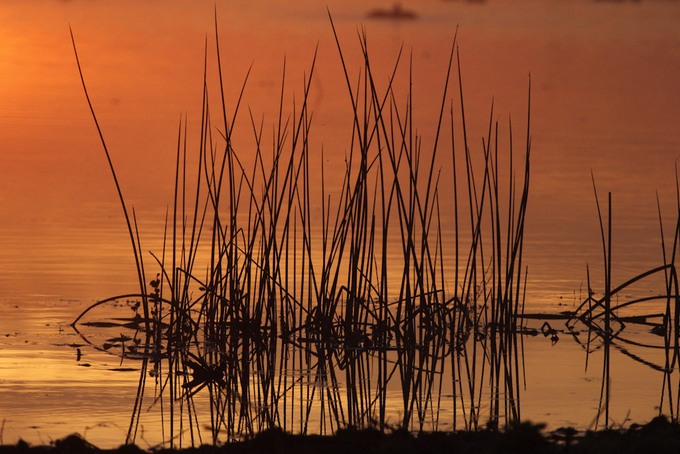

For one to enjoy what this place has to offer, an early arrival at the
place is suggested. The gate would not open until sunrise but there is a
temporary parking area where one can begin to behold the break of dawn. In
my case, I left home before daybreak, arrived at the Yolo Wetlands minutes
before sunrise. Thousands of Canadian geese playing on the swamps.


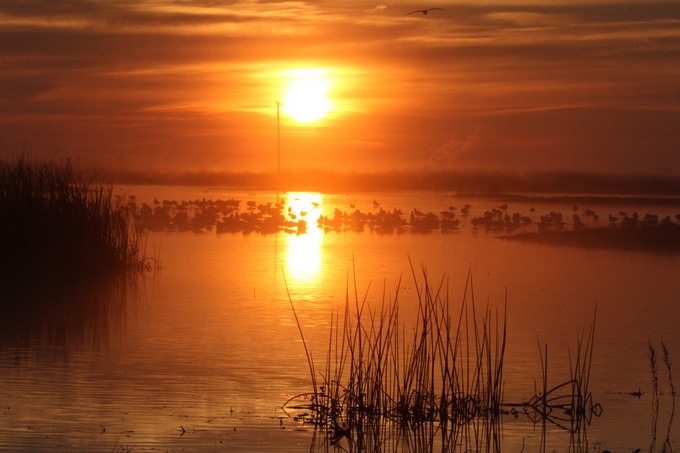


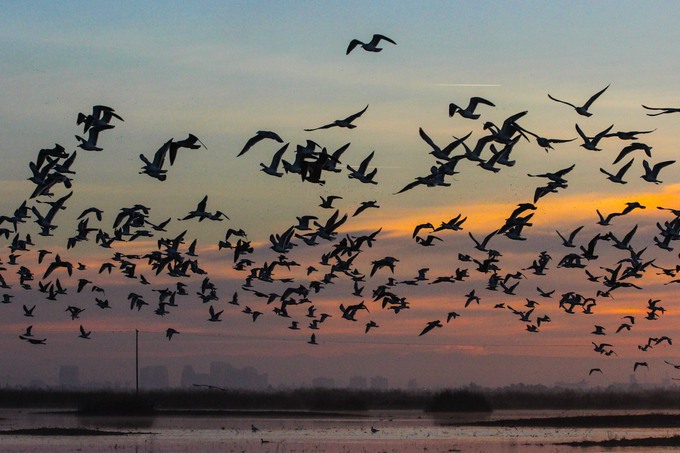

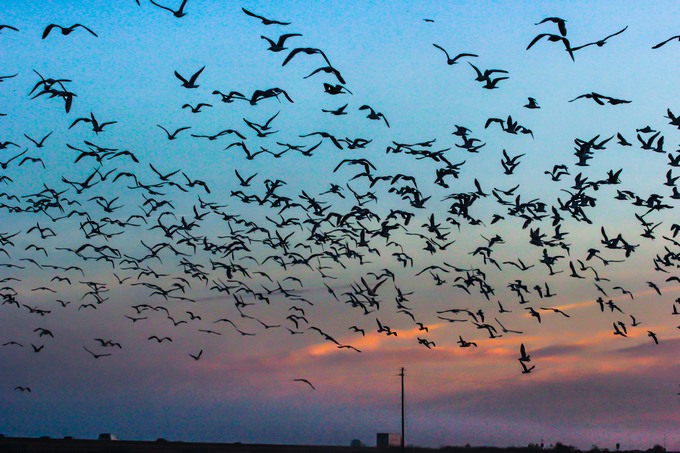
As I captured the magnificent rising of the sun, I was overcome by the
synchronized and sudden take off tens of thousands of birds that darkened
the sky, and was pleasantly deafened by the flapping sound of geese. As in
the old adage, "The best things in life are free!"
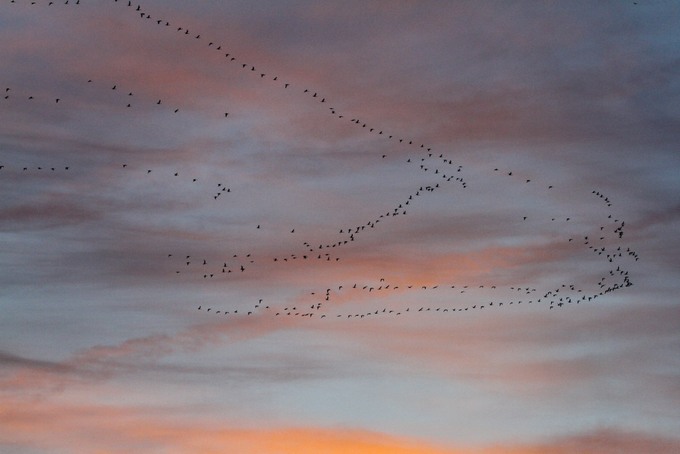

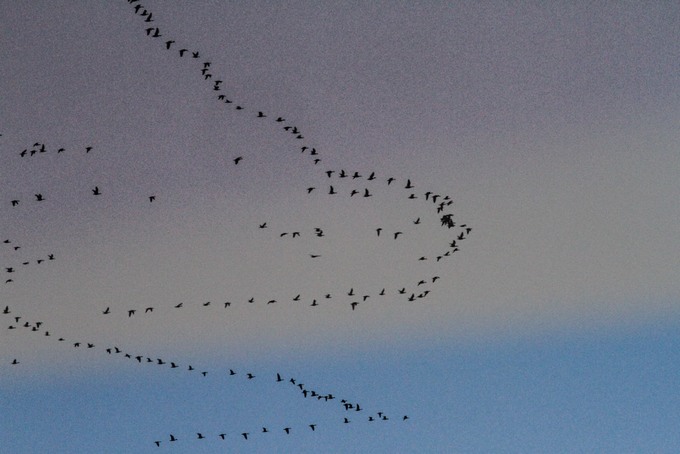
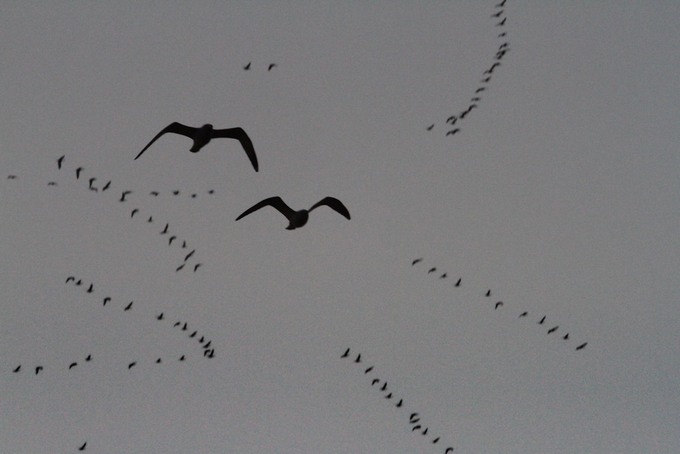
The pictures above are a usual sight where one can behold several groups
of thousands upon thousands of birds in flight - way before sunrise. We
would later find out that this beautiful sight would be seen each morning
during the bird migration season every February and March of each year. A
minute before the sun starts to show itself in the horizon, you shall have
seen TEN THOUSAND BIRDS in the sky.

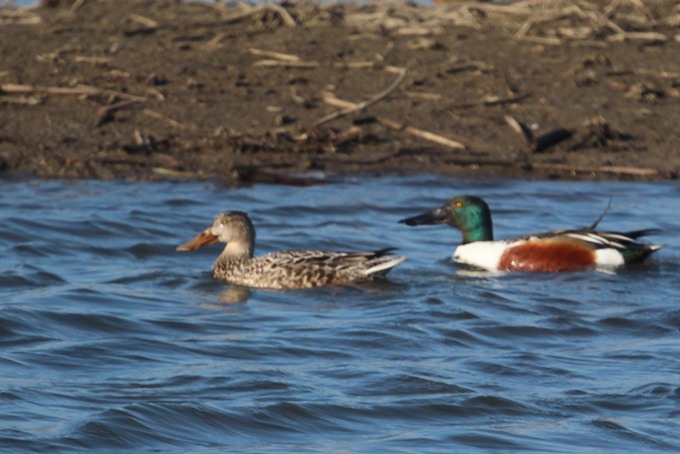

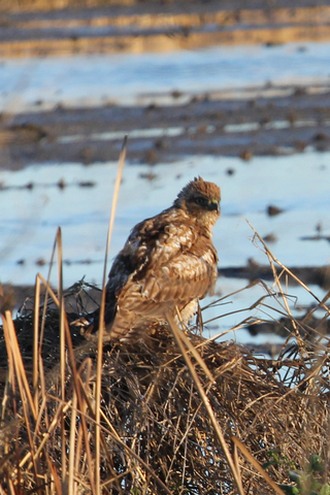

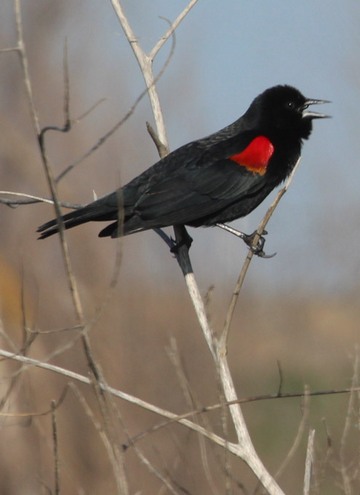
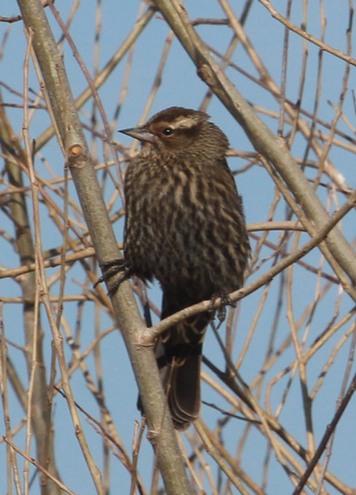
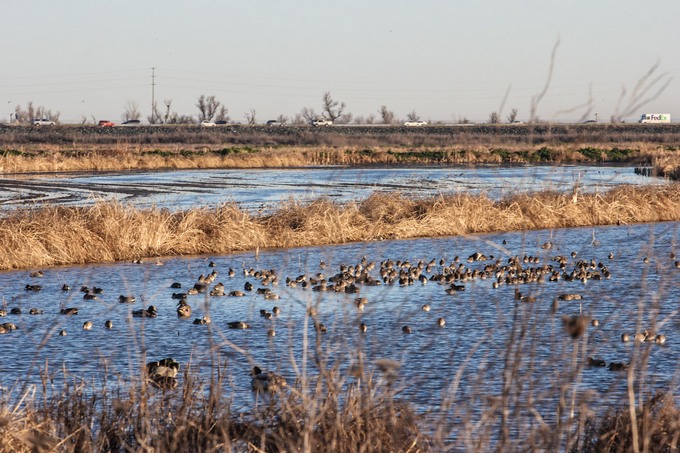
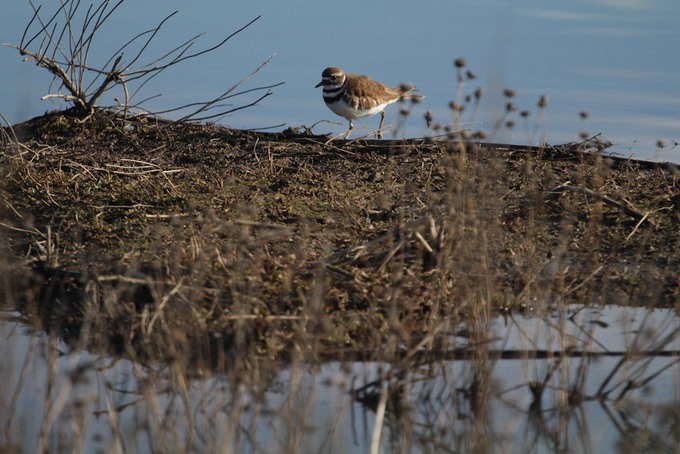
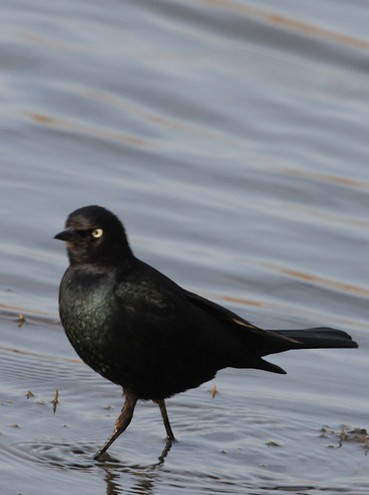
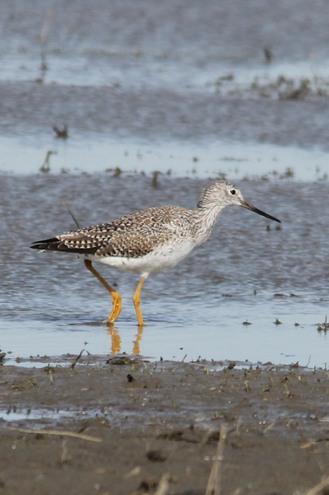

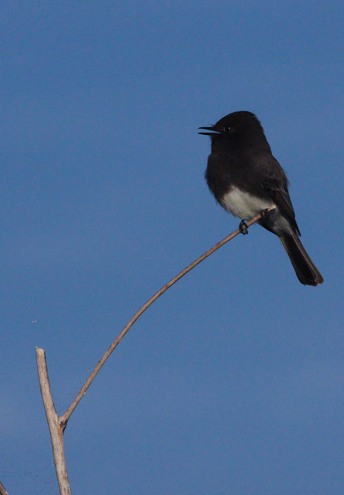
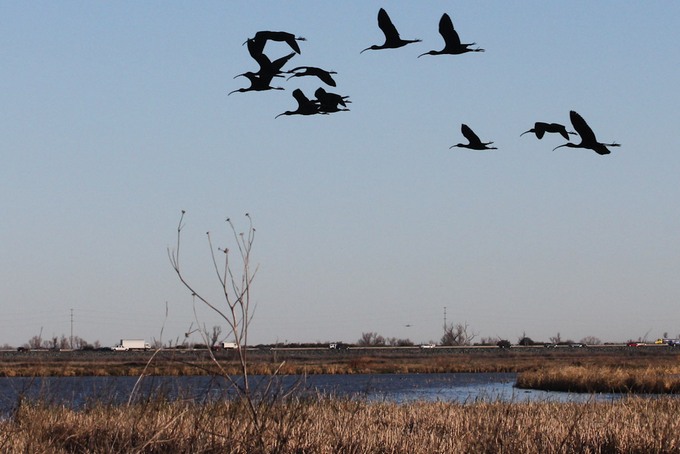
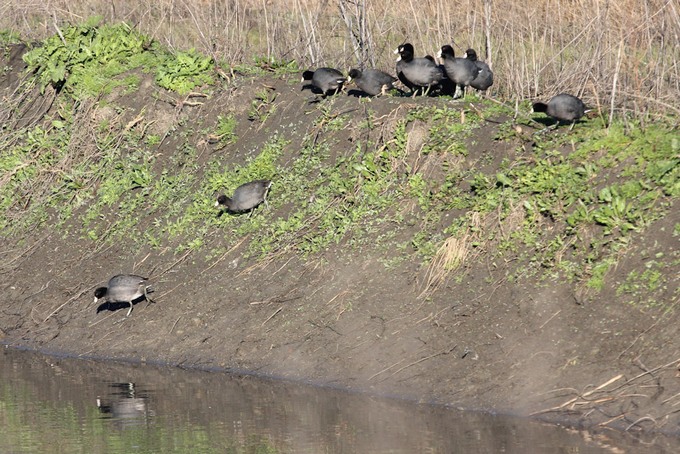
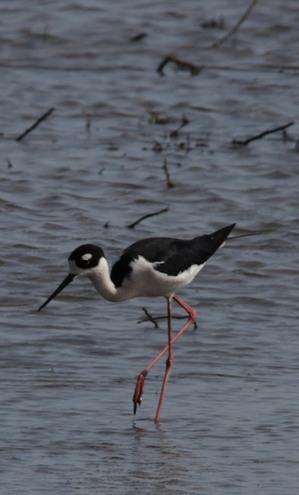 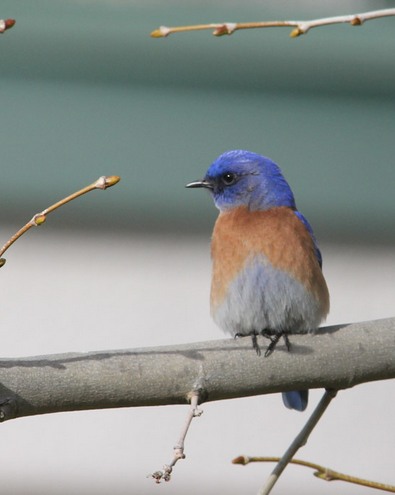
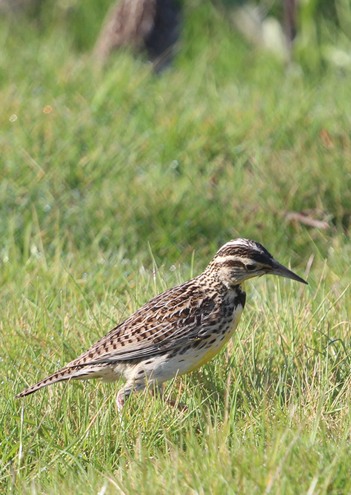
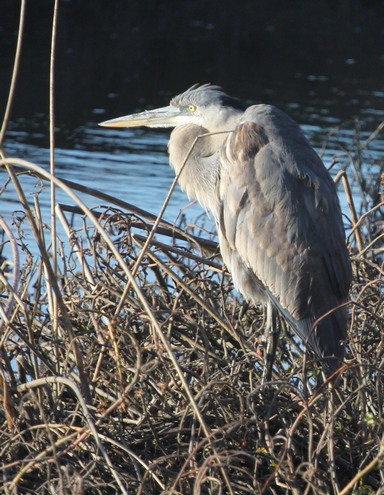
 
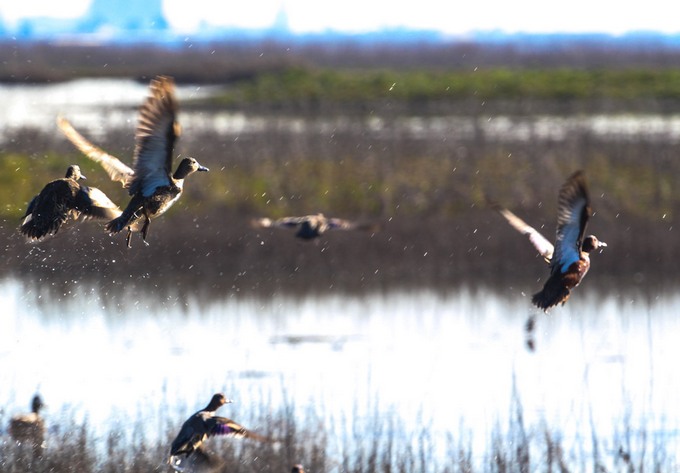

Since 1997, this 16,000 acre wetlands saw significant increases in
waterfowl and other bird populations. The area has been carefully designed
and constructed to avoid impacts on the flood carrying capacity of the
Yolo bypass, hazardous levels of mosquitos without impacting surrounding
farming operations.
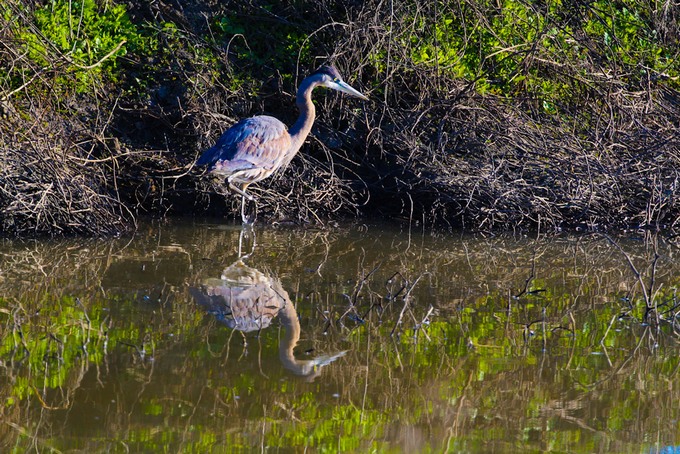

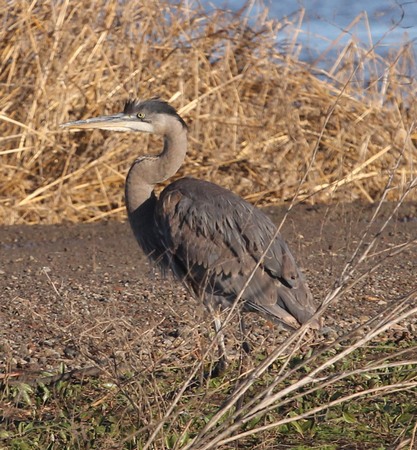

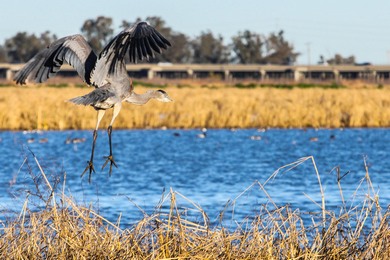
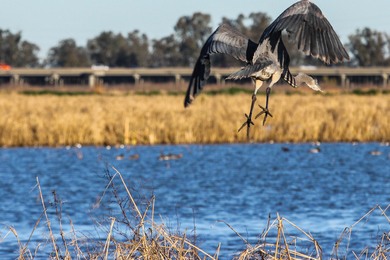
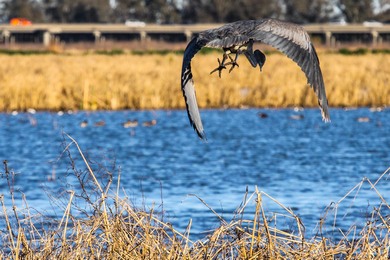
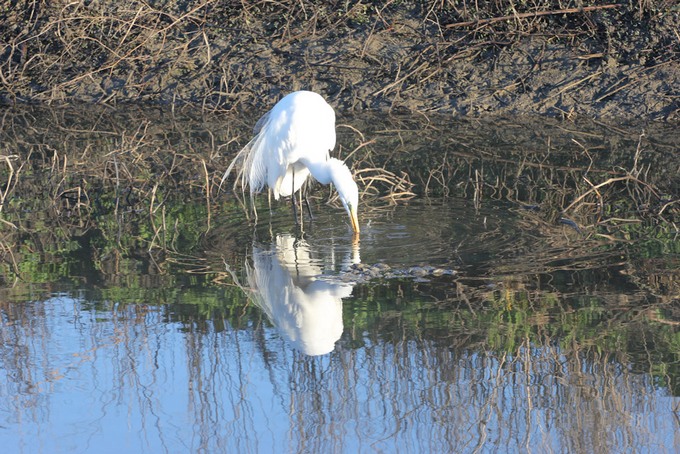
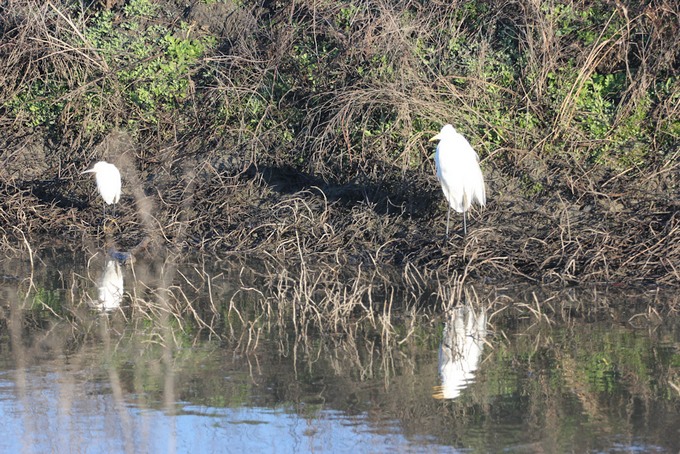
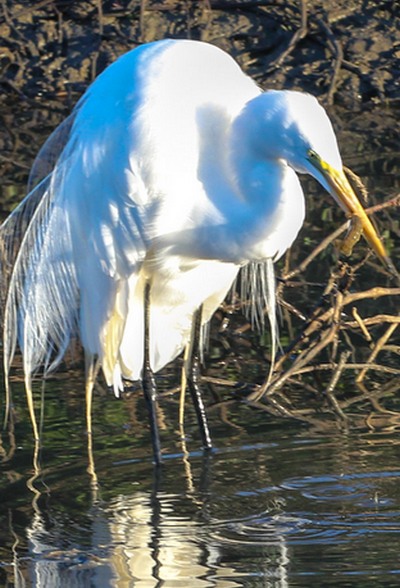
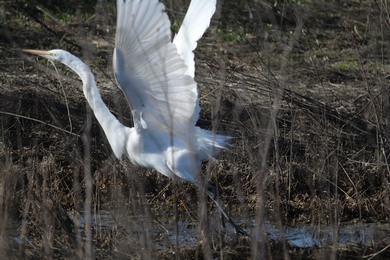
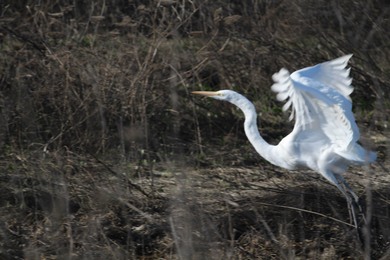


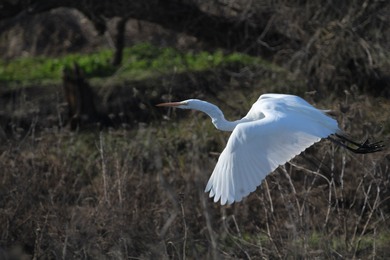

Great egrets were decimated by plume hunters who supplied purveyors of the
latest ladies' fashions. Their populations plunged by some 95 percent.
Today, the birds have enjoyed legal protection over the last century, and
their numbers have increased substantially and are found in many swamps
and wetlands in California and perhaps the rest of North America.
(Back --->
Environmental Awareness)
(Back ---> Current Features)
|

